SUMMARY
This is AI generated summarization, which may have errors. For context, always refer to the full article.
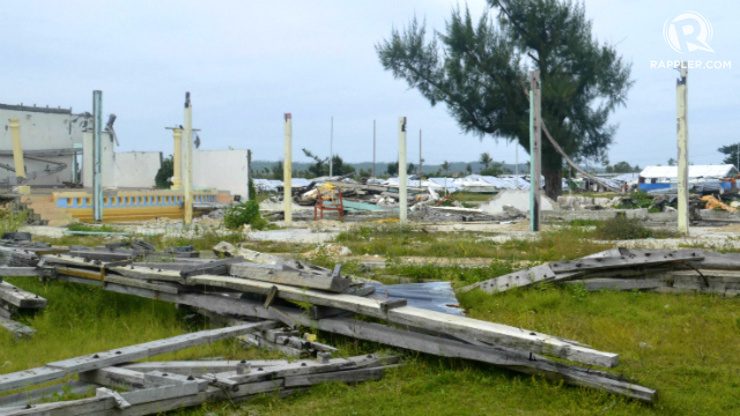
GUIUAN, Eastern Samar – The long stretch of road leading to Guiuan in Eastern Samar is lined with numerous clusters of small shanties roofed with shiny galvanized iron (GI) sheets.
Some households have tarpaulins for roofs, printed with logos of humanitarian organizations. They use these plastic sheets to defend them from the heavy rain or the harsh sun. These logos can also be seen on numerous heavy duty vehicles that traverse the dirt roads of several towns.
Life goes on for the people of Guiuan. Even as the images of the day that left them homeless and hungry are still fresh in their minds, they continue to strive. (READ: Yolanda memories still fresh in mind of Guiuan mothers)
Just outside the Guiuan campus of the Eastern Samar State University (ESSU), vendors and their patrons go merrily about. The sounds of the familiar kumusta ka (how are you) and mahimo maayo ang imong adlaw (have a nice day) echo.
In another part of campus, college students take comfort from the afternoon sun by gathering under a tree in the middle of the vast campus. Even in a group, they are doing their own thing. Some are fanning themselves using cardboard strips while the others tease and tickle each other.
Their laughter and smiles could make one forget the horror and tragedy they went through 9 months ago. But the damage is still visible all around them.
Temporary environment
Typhoon Yolanda destroyed 90% of the University’s Guiuan campus when it made its first landfall on November 8, 2013.
As of late July 2014, the majority of the campus – which is located in a small fishing town – is still in ruins.
“Lahat dito ay temporary lang,” student Leah Mae Daza told Rappler. “Iyong classroom sa subject ko mamaya, tinayo lang para magpatuloy kami sa pagaaral.”
(Everything here is temporary. My classroom in a subject later, it was built just so we can continue our studies.)
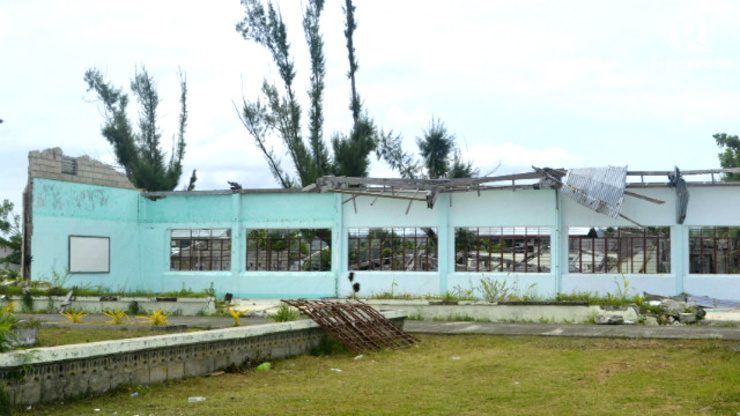
These makeshift structures, built to accomodate the school’s urgent needs, are exactly that – temporary. Most are made of light materials. Some are merely recycled scrap metal and wood. The only thing that stood out were the library’s pastel color.
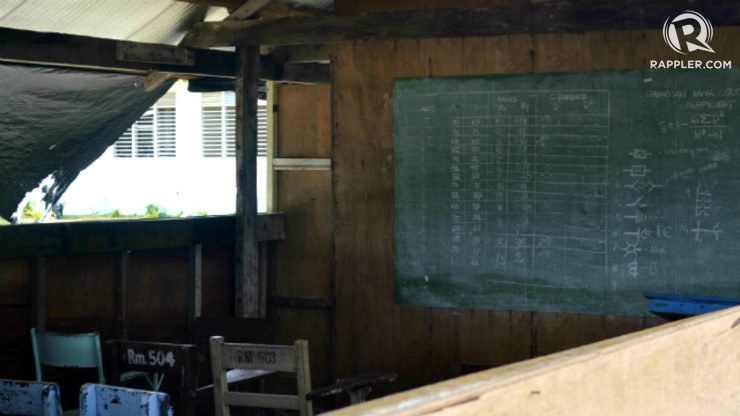
The sprawling area used to have concrete buildings that served as the second home of more than a thousand students.
One building that housed the auditorium, Leah pointed out, was newly erected when it was destroyed by the typhoon.
Located behind what used to be the auditorium is one of the town’s tent cities. From a distance, one could hear the laughter of a group of children playing tag on the field.
The school year started in June despite the incomplete facilities. Students from poor families huddled under makeshift classrooms and big trees as they listened to the day’s lesson. (READ: How to help kids affected by Yolanda; it changed me)
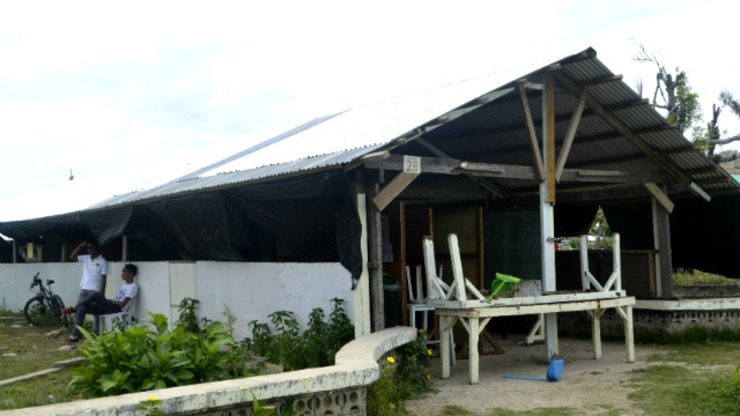
A 3rd year Education major, Leah dreams of becoming a teacher in her hometown. When Typhoon Yolanda hit, she thought she had to say goodbye to her dream to wear a teacher’s uniform.
“Nasira po ang bahay namin at walang natira,” she recalled. “Posible pala talaga na mawala bigla ang lahat.“
(Our house was destroyed and nothing was left. I realized that it was possible to lose everything in a snap.)
Pushing forward
The Daza household survived and persevered. The family did whatever it took to make sure that Leah could continue her education. It was hard, considering her parents support four children, but they eventually saved enough money for Leah’s expenses.
“Unti-unti na rin kaming bumabangon kasi kailangan.“
– Leah Mae Daza
“Unti-unti na rin kaming bumabangon kasi kailangan,” she explained. “Sa tulong na rin ng mga organizations at siguro iyong pakiramdam na kailangan magpatuloy, heto kinakaya na namin.“
(We’re slowly getting back on our feet because we need to. With the help of organizations and maybe also the feeling that we need to continue, we’re trying our best to.)
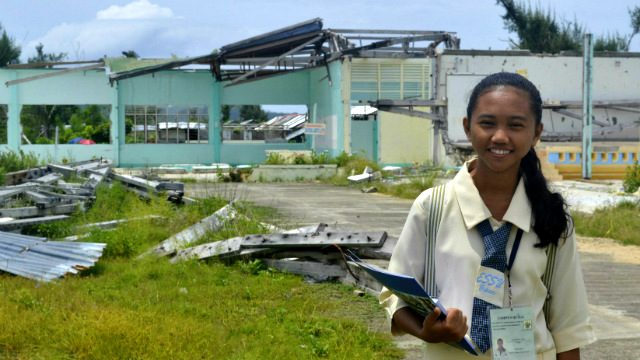
Unfortunately, it wasn’t the same for other students of the state university.
Leah noticed that there were less familiar faces in her class.
According to her, some of her former classmates decided to work to contribute to their family. In the process, they had to abandon their education to focus on earning money.
“May kaunti na pumunta na ng Maynila sa mga pamilya nila doon pero mas marami pa iyong wala na kasing pera,” she said.
(Some went to Manila to live with their families while most stopped since they lost all their money.)
Building back
In his 5th State of the Nation Address (SONA), President Benigno Aquino III cited the ongoing rehabilitation efforts in several Yolanda-hit areas in Visayas. He congratulated the government agencies for responding quickly. On July 25, the President approved local rehabilitation plans. (READ: SONA Fact Check: Half-truths about Yolanda)
The rehabilitation process of ESSU is far from over. The students will still have to attend classes in makeshift classrooms, at least for the coming months.
But Leah is optimistic, like her other schoolmates, that everything will be normal again.
“Sana bago grumaduate, bumalik na sa dati,” Leah wished. (I hope before I graduate, everything will go back the way it was.) – Rappler.com
Add a comment
How does this make you feel?
There are no comments yet. Add your comment to start the conversation.